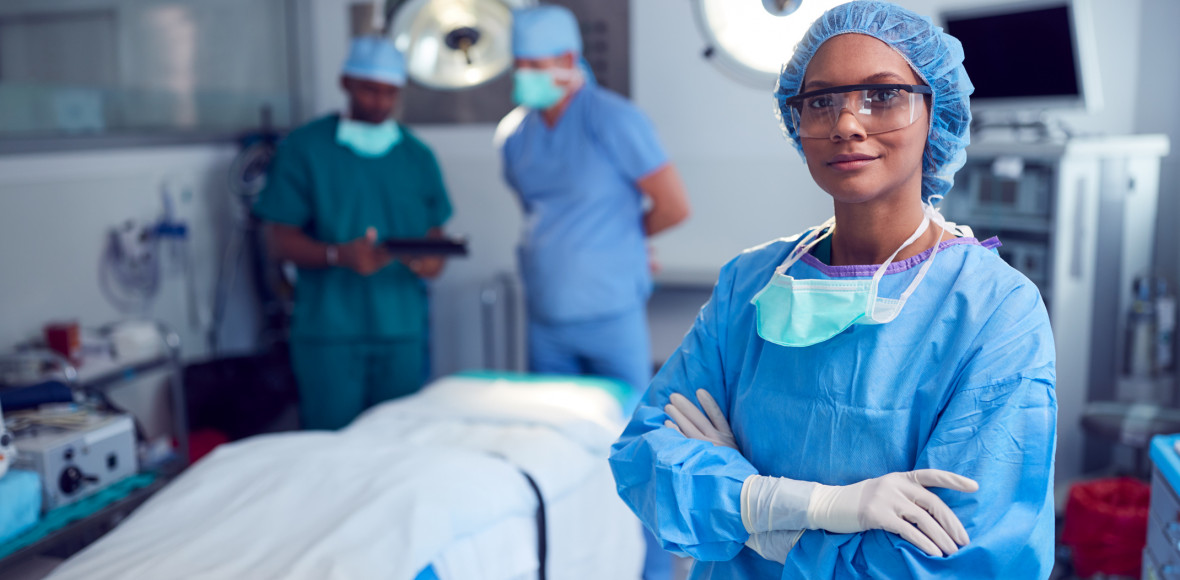Airborne Infection in the OR
Published
Preventing Surgical Site Infections in the Operating Room
Read Part 1 of the this blog post here.
Air Contamination in the OR
For decades, a surgical patient’s risk of becoming infected was considered largely a factor of the patient’s own health, the surgical team’s skill, and the sterility of the surgical instruments.
Certainly, these factors matter. Patients who smoke, are obese, or have poorly controlled diabetes are at greater risk for infection. Procedures performed meticulously and with sterile instruments lead to fewer infections. However, as Danish scientists have noted, when it comes to infection risk factors, air quality is often disregarded.
It shouldn’t be.
In orthopedic and cardiothoracic operations, in particular, “the risk of surgical site infection is strongly correlated with the amount of airborne bacteria being present in the operating room and the surgical field,” asserts Mikael Persson, Ph.D., a Swedish mechanical engineer.
For example, research confirms airborne transmission of Mycobacterium chimaera from contaminated heater-cooler units commonly used in open-heart surgery. Patients have become infected even when the operating theatres were equipped with ultraclean air ventilation (laminar airflow).
With abdominal and breast surgeries, too, OT air contamination has been directly correlated with surgical site infection.
A team from Denmark and Ghana collected air samples during 124 surgical procedures, 11 of which (9%) resulted in confirmed infection. Substantially more air contamination was detected during the procedures that resulted in infection than during the procedures that did not.
Cementing the link, the scientists used genetic methods to match the bacteria captured in the air with the bacteria collected from the wounds.
In 8 of the 11 infection cases, a species match was found between bacteria isolated from the infection and the corresponding air isolates. In 6 cases, matching ribotypes were found.
The authors note that the hospital, a major teaching facility in Ghana, took great care to prevent infection. The scrub team wore sterile gowns and gloves. Incision sites were disinfected three times. Antibiotics were administered prior to first incision. Between procedures, surfaces and floors were cleaned with a 10% chlorine solution. The room was equipped with HEPA filtration.
Nonetheless, air sampling detected “high levels of airborne bacteria,” far higher, on average, than maximum levels recommended by the Healthcare Infection Society. Pathogens included S. aureus, Klebsiella spp. and Acinetobacter spp.
How do these bacteria infiltrate the operating theatre air and find their way into open wounds?
Airborne pathogens have many sources, including skin scales, dust, textile fibers, and aerosols produced by coughing and talking.
Particles can circulate via the convection currents created by the temperature differences between the body and the environment, explains French surgeon Dominique Chauveaux. In addition, particles settled on an unsterile floor can be dispersed by air eddies generated from opening doors and foot traffic.
In about 30% of SSI cases caused by airborne contamination, infection can be attributed to “direct settling of the particles on the wound,” according to Chauveaux. In the other 70% of cases, bacteria settle on the instruments and surgeon’s hands, “followed by transfer to the wound.”
Helping to Prevent Airborne Infection in the Operating Theatre
For years, surgeons have relied largely upon prophylactic antibiotics to prevent surgical site infection. However, given the rise of antimicrobial resistance, overuse of antibiotics has become a serious problem.
“Everyone just wants to [use] more antibiotics, [but surgeons] have to be good antibiotic stewards so that we are not the ones who are complicit in creating antimicrobial resistance,” cautions Bryan Springer, M.D., an American orthopedic surgeon.
Recently, attention has turned to keeping the OT air clean, so pathogens don’t have the opportunity to infiltrate wounds or settle on surgical instruments.
“Measures that decrease airborne particle counts are central to diminishing the risk of contamination by airborne microorganisms,” asserts Chauveaux.
Some of these measures rely on the behavior of surgical staff. For example, the surgical team should limit door openings, talk only when necessary, and enter the theatre one by one, rather than as a group. Healthcare workers should remove their gloves away from the surgical instruments and avoid cutting or stretching bandages near the surgical site.
But these strategies can only accomplish so much. As American surgeons have noted, behavioral measures have had just “a marginal impact” in reducing OT contamination or the risk of infections related to joint replacements.
What would have a larger impact? Air disinfection, particularly NanoStrikeTM technology from WellAir.
WellAir’s Novaerus devices utilize NanoStrike Technology to inactivate airborne viruses, bacteria and mold spores. The technology harnesses a range of physical concurrent pathogen inactivation processes to safely disinfect the air.
NanoStrike coils provide a powerful strike that works to burst airborne pathogen cells, rapidly inactivating them, ensuring they are no longer a threat of infection. Installed in operating theatres and ICUs worldwide, Novaerus devices safely operate next to the most vulnerable patients.
Though HEPA filtration is considered the gold standard in air purification, filters only trap pathogens. NanoStrike technology inactivates them, one reason Novaerus units are a critical addition to environmental control in the operating theatre.
Cleared by the FDA as a Class II Medical Device, the Novaerus Defend 1050 also protects OT personnel from exposure to “surgical smoke,” the toxic mix of volatile organic compounds (VOCs), other gases, and ultrafine particles emitted by lasers and cautery devices. As the U.S. Centers for Disease Control and Prevention confirms, these particles can cause headache, asthma-like symptoms, and eye, nose and throat irritation.
Surgical site infections are a global problem, affecting countries of all income levels. The cost of these infections, to patients and hospitals alike, is enormous, and hospitals must deploy every possible precaution, including air disinfection.
Writing in The Lancet Infectious Diseases, an American surgeon, Robert Sawyer, describes the magnitude of the SSI crisis, imploring hospitals worldwide to implement more robust measures. “An ounce of prevention,” he asserts, “is worth a pound, yuan, birr, or peso of cure.”
Read Part 1 of the this blog post here.
